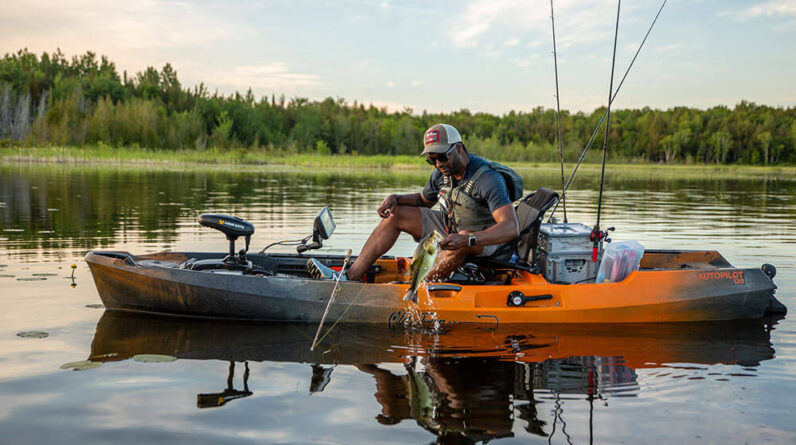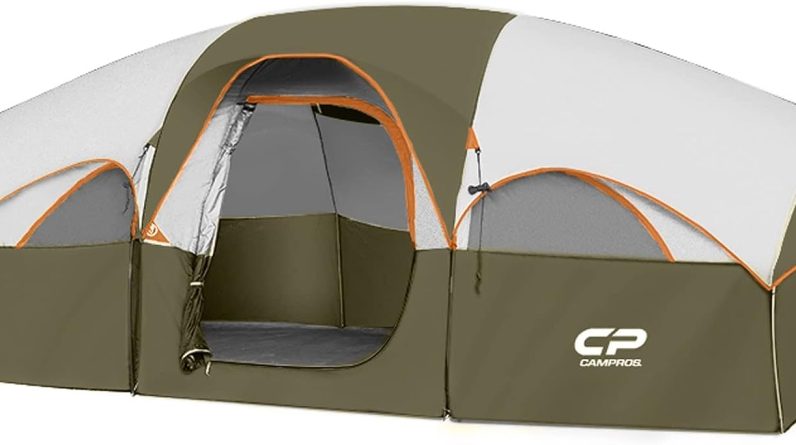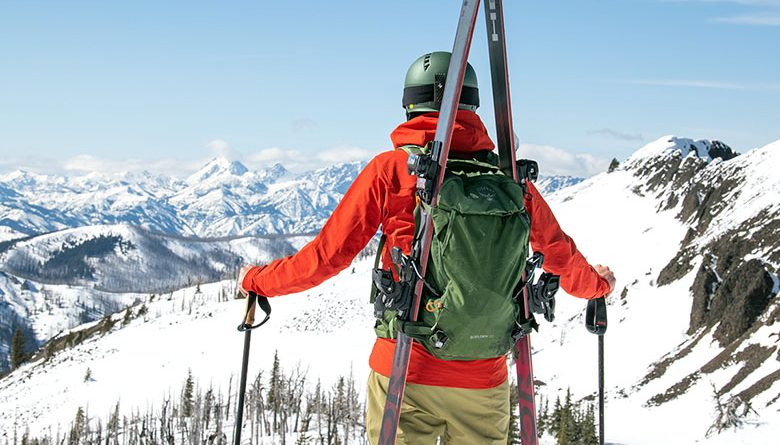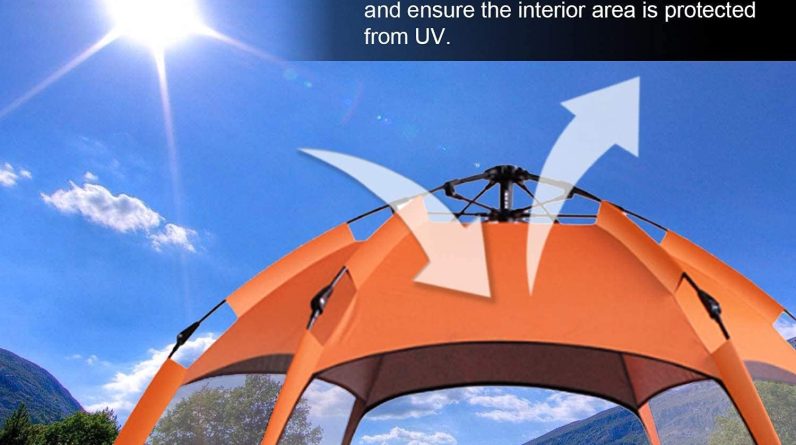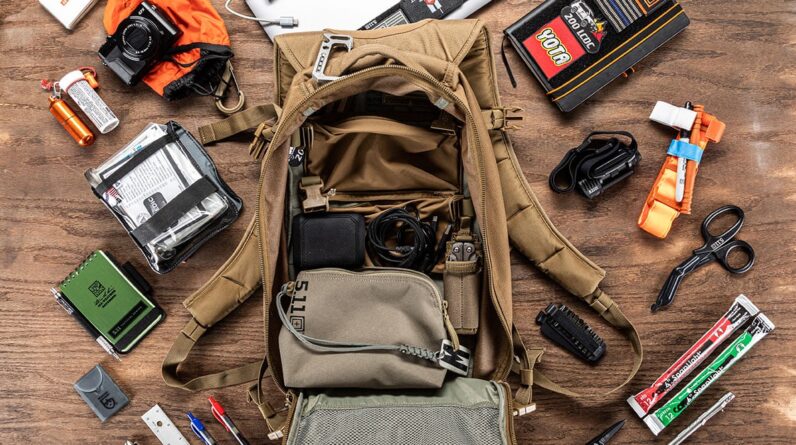
So, you’ve decided to embark on a thrilling journey into the world of survival kits. But here’s the question that’s been lingering in your mind: can you truly make a pre-made survival kit tailored to your distinct requirements? Fear not, my friend, because in this article, we’ll reveal the secrets of adapting a pre-made survival kit to perfectly suit your unique needs. Whether you’re a seasoned adventurer or just starting on your path to preparedness, get ready to discover the art of personalizing your survival gear in this exhilarating exploration.
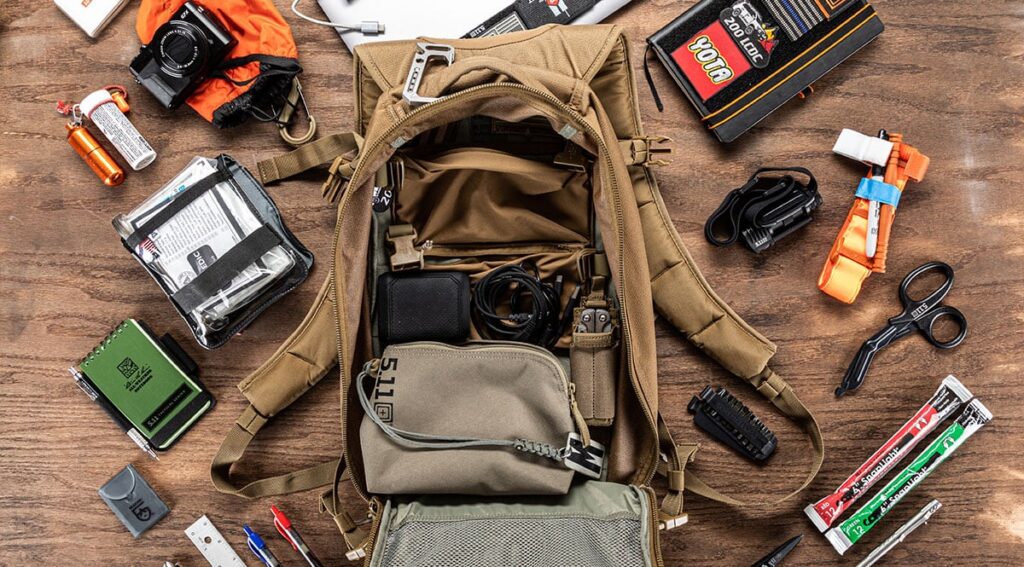
This image is property of assets.cat5.com.
Factors to Consider Before Adapting a Pre-Made Survival Kit
When it comes to preparing for emergencies and ensuring your safety in uncertain situations, having a survival kit is essential. While pre-made survival kits offer convenience and a good starting point, it’s important to consider certain factors before adapting one to your unique requirements. By doing so, you can ensure that your kit is tailored to your specific needs and will efficiently aid you in times of crisis. Here are some crucial factors to consider:
Location and Environment Analysis
The first factor to consider before adapting a pre-made survival kit is your location and the environment you are most likely to encounter. Different regions have varying climates, terrain, and potential hazards. For example, if you live in an area prone to hurricanes, your survival kit should include items specifically designed for those conditions. Understanding the elements and challenges you may face will help you choose the appropriate tools and supplies for your kit.
Expected Duration of Survival
Another important aspect to consider is the expected duration of survival. Are you preparing for a short-term emergency, such as a power outage or temporary evacuation, or are you planning for a long-term situation, such as a natural disaster that may disrupt essential services for an extended period? The duration of survival will impact the quantity and type of supplies you need to include in your kit.
Individual Health and Medical Needs
Taking into account your individual health and medical needs is crucial when adapting a pre-made survival kit. If you or anyone in your group has specific medical conditions or requires medications, it’s essential to include those in the kit. Additionally, consider any necessary medical equipment, such as inhalers or EpiPens, and include them in your customized kit.
Number of People in Your Group
The size of your group will also play a role in determining the contents of your survival kit. If you are responsible for more than just yourself, you’ll need to account for the needs and requirements of each individual. Ensure that you have enough food, water, and other essential supplies to sustain everyone for the expected duration of survival.
Seasonal Considerations
Seasonal considerations, such as extreme heat or cold, should be taken into account when adapting your survival kit. Certain items, like extra blankets, hand warmers, or sun protection, may be necessary depending on the time of year and the climate in which you live. Plan accordingly to ensure you are adequately prepared for the seasonal challenges that may arise.
Planning and Evaluating Your Unique Requirements
Once you have considered the factors mentioned above, it’s time to plan and evaluate your unique requirements. Here are some steps to guide you through this process:
Identify Your Priorities
Before modifying a pre-made survival kit, it’s essential to identify your priorities. What are the primary concerns and risks you are preparing for? Are you focused on food and water security, medical needs, or communication? By identifying your priorities, you can better allocate your resources and adapt the kit accordingly.
Assess Your Skill Set
Consider your skill set and knowledge in survival techniques. Are you proficient in first aid, navigation, or fire building? Assessing your skill set will help you determine what additional tools or equipment you may need to include in your kit. If you lack certain skills, it may also inform your decision to invest in specialized training or courses to enhance your preparedness.
Consider Your Daily Needs
While survival kits primarily focus on immediate safety and sustenance, it’s important to consider your daily needs as well. Think about the routines and habits you have in your daily life and try to adapt your kit to meet those needs as much as possible. For example, if you are used to taking certain medications daily, make sure you have an ample supply in your survival kit.
Evaluate Your Food and Water Requirements
Food and water are critical for survival, so it’s crucial to evaluate your specific requirements in these areas. Consider any dietary restrictions, allergies, or medical conditions that may impact the types of food and water you can consume. Also, take into account the number of people in your group and the expected duration of survival when planning for food and water provisions.

This image is property of assets.cat5.com.
Choosing the Right Pre-Made Survival Kit
After considering your unique requirements, it’s time to choose the right pre-made survival kit as a foundation for customization. Here are some steps to help you in the selection process:
Research Different Options
Do thorough research on the available pre-made survival kits in the market. Many reputable companies offer a variety of kits, each tailored to different scenarios and needs. Compare the options and consider the contents, features, and overall reputation of the kits.
Compare Features and Contents
When comparing different pre-made survival kits, pay close attention to the features and contents of each kit. Look for items that align with your identified priorities and requirements. Consider the quality of the products included and whether they meet your standards for durability and functionality.
Read Reviews and Ratings
Before making a final decision, it’s always helpful to read reviews and ratings from other users who have purchased and used the pre-made survival kits you are considering. Genuine feedback will provide insights into the practicality and effectiveness of the kits, helping you make an informed choice.
Modifying and Customizing the Survival Kit
Once you have selected a pre-made survival kit, it’s time to modify and customize it to fit your specific needs. Here are some steps to guide you through this process:
Assess the Contents of the Kit
Thoroughly assess the contents of the pre-made survival kit you have chosen. Take inventory of the items and familiarize yourself with their purpose and functionality. This will help you determine which items are essential for your specific requirements and which ones may need to be supplemented or replaced.
Add or Remove Items Based on Your Requirements
Based on your priorities, individual needs, and the assessment of the pre-made kit, add or remove items as necessary. Consider items you may need to add, such as specialized tools or equipment specific to your location or circumstances. Simultaneously, remove items that are redundant or may not be suitable for your situation.
Consider Special Equipment Needs
Depending on your unique requirements, you may need to consider special equipment needs. For example, if you live in an area prone to earthquakes, you may want to include a sturdy crowbar for potentially freeing yourself from debris. Evaluate your surroundings and potential scenarios to identify any specialized equipment you may need and add them to your customized survival kit.

This image is property of montemlife.com.
Personalizing Your Survival Kit
To make your survival kit truly personalized, there are a few additional considerations that can greatly enhance its effectiveness. Consider including the following:
Include Important Documents and Contact Information
In any emergency situation, having access to important documents and contact information is crucial. Keep copies of identification papers, insurance policy information, and emergency contact numbers in a waterproof and secure pouch within your survival kit. This will provide peace of mind and ensure you have the necessary information readily available.
Add Personal Medications and First Aid Supplies
If you or someone in your group requires specific medications or has a pre-existing medical condition, include an ample supply of those medications in your survival kit. Additionally, pack a comprehensive first aid kit that meets your specific needs. Customize it by adding any specialty medical supplies required for your unique health concerns.
Pack Essential Hygiene and Personal Care Items
Maintaining personal hygiene and care is essential, even in survival situations. Pack essential hygiene items such as toothbrushes, toothpaste, soap, toilet paper, and feminine hygiene products. These small comforts can make a big difference in maintaining your well-being during challenging times.
Testing and Familiarizing Yourself with the Kit
Having a well-equipped survival kit is only part of being prepared. It’s equally important to test and familiarize yourself with the kit’s contents and functionality. Here are some steps to help you become proficient in using your kit:
Practice Using the Tools and Equipment
A crucial step in being prepared is practicing using the tools and equipment in your survival kit. Take the time to become familiar with each item and learn how to use them effectively. Practice starting fires, using a compass, or setting up a shelter. This hands-on experience will build your confidence and ensure you can rely on the tools when the time comes.
Check the Functionality of All Components
Regularly inspect and test the functionality of all components in your survival kit. Ensure that batteries are charged, flashlights work, and tools are in good working condition. Replace any faulty or expired items promptly.
Train on Emergency Procedures
In addition to being familiar with your survival kit, it’s essential to train on emergency procedures. Enroll in first aid and emergency response courses to learn life-saving techniques. Practice evacuation drills and develop a clear plan of action for various scenarios. Regular training and practice will help ensure you are well-prepared to handle emergencies.
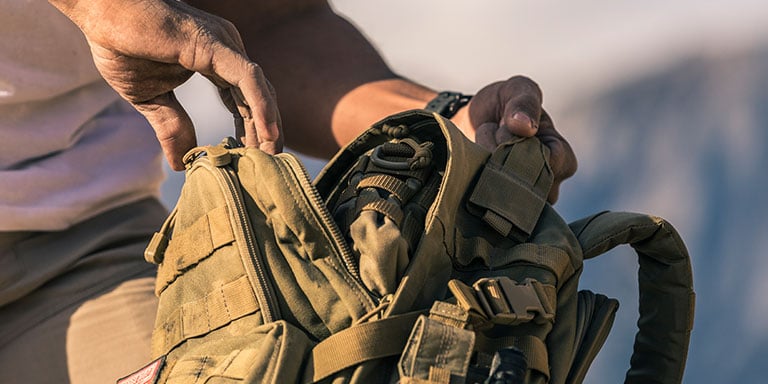
This image is property of assets.cat5.com.
Organizing and Packing the Kit
Having an organized and well-packed survival kit is essential for easy access and efficient use in emergency situations. Here are some tips to organize and pack your kit effectively:
Categorize and Separate Items
Categorize and separate your survival kit items into logical groups. For example, group together first aid supplies, food and water provisions, tools and equipment, and personal care items. Use labeled containers or pouches to keep items organized and easily identifiable.
Use Waterproof and Airtight Containers
To protect your survival kit contents from water damage, use waterproof and airtight containers. This is particularly essential for items such as matches, batteries, and electronic devices. Consider using resealable plastic bags or waterproof cases to keep items dry and secure.
Create an Inventory List
Maintain an inventory list of the contents of your survival kit. This list will help you keep track of what you have, identify any missing items, and facilitate regular inspections and updates. Make sure to keep a copy of the inventory list in a safe place outside of your survival kit as well.
Maintaining and Updating Your Kit
To ensure the effectiveness of your adapted survival kit, it’s important to regularly maintain and update its contents. Here’s how you can do that:
Inspect and Replace Expired Items Regularly
Inspect your survival kit on a scheduled basis and replace any expired items. This includes checking the expiration dates of food, medications, and other perishable supplies. Keeping your kit up to date will ensure that all provisions are safe and effective when needed.
Keep Up with Changing Needs and Activities
As your needs, circumstances, and activities change, so should your survival kit. Regularly evaluate your location, environment, and personal situation to determine if any updates or modifications are necessary. For example, if you move to a different region or take on new outdoor activities, your kit may need adjustments to meet the specific challenges and requirements.
Review and Refresh Your Survival Skills
In addition to updating your kit, it’s crucial to review and refresh your survival skills periodically. Take refresher courses on first aid, navigation, or other relevant skills. Engage in regular practice activities to hone your abilities. Keeping your skills sharp will enhance your ability to effectively use your survival kit during emergencies.
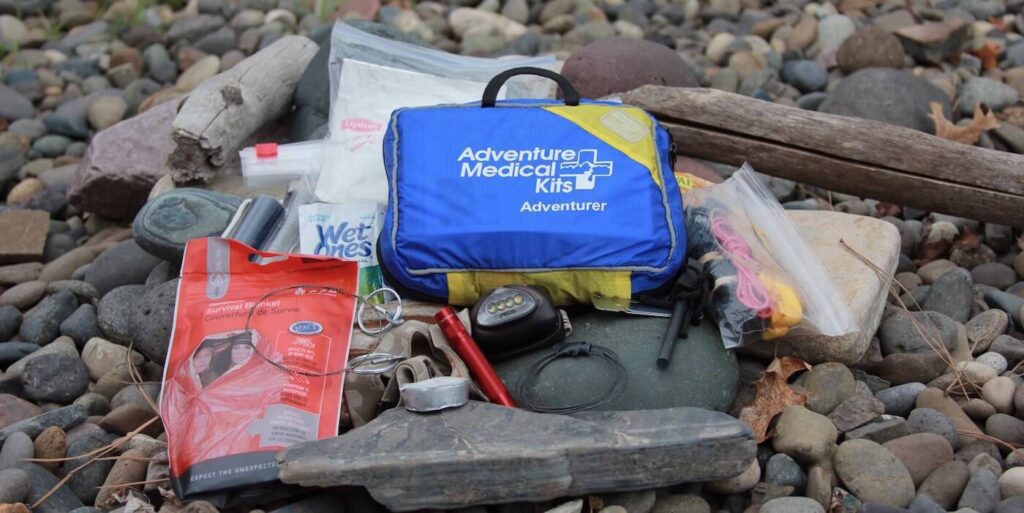
This image is property of manmakesfire.com.
Having a Backup Plan
While having a well-equipped survival kit is essential, it’s equally important to have a backup plan in place. Here’s what you should consider:
Create Redundancy within Your Kit
Create redundancy by including backup items for critical supplies. For example, include multiple fire-starting methods or extra water purification methods. This redundancy ensures that you have alternative options if one method or item becomes unavailable or fails.
Plan for Unexpected Emergencies
No matter how well-prepared you are, unexpected emergencies can still occur. Plan for these situations by thinking about alternative strategies and resources. Consider scenarios where your primary kit may be lost or compromised and develop contingency plans to address those situations.
Consider Secondary Means of Communication
In emergency situations, communication is vital. While many survival kits include portable radios or signaling devices, it’s wise to consider secondary means of communication. This could include satellite phones, whistle signals, or even personal beacons. Having multiple ways to communicate with rescuers or other members of your group can greatly increase your chances of being located and rescued.
Using the Adapted Survival Kit Effectively
Having a customized survival kit is only valuable if you know how to use it effectively. Here’s how you can make the most of your adapted kit:
Develop a Survival Plan and Strategy
Having a well-thought-out survival plan is essential to effectively utilize your kit. Consider different scenarios, establish designated meeting points, and develop strategies for various emergencies. Determine roles and responsibilities for each member of your group and ensure everyone is familiar with the plan.
Stay Informed and Follow Official Guidelines
In any emergency situation, it’s crucial to stay informed and follow official guidelines and instructions. Keep a battery-powered or hand-cranked radio to stay updated on weather conditions, evacuation notices, or any other pertinent information. Following official guidelines will help keep you safe and ensure you make informed decisions based on the latest information.
Regularly Review and Practice Using the Kit
Once you have your adapted survival kit and a solid plan in place, it’s important to regularly review and practice using the kit. Conduct drills with your group to simulate emergency situations and test your effectiveness in using the kit’s contents. Regular practice will ensure that you are prepared and confident in your ability to handle unforeseen challenges.
In conclusion, adapting a pre-made survival kit to fit your specific needs is essential for effective emergency preparedness. By considering factors such as location, duration, individual health, and group size, you can personalize your kit to address your unique requirements. Choosing the right pre-made kit as a foundation, modifying and customizing it with the necessary tools, supplies, and personal items, and regularly maintaining and updating its contents will contribute to a well-prepared and reliable survival kit. Remember, practice, and familiarity are the keys to successfully utilizing your kit during emergencies, so make sure to train regularly and stay informed. With a well-adapted survival kit and the knowledge to use it effectively, you can confidently face unexpected challenges and ensure the safety and well-being of yourself and your loved ones.

